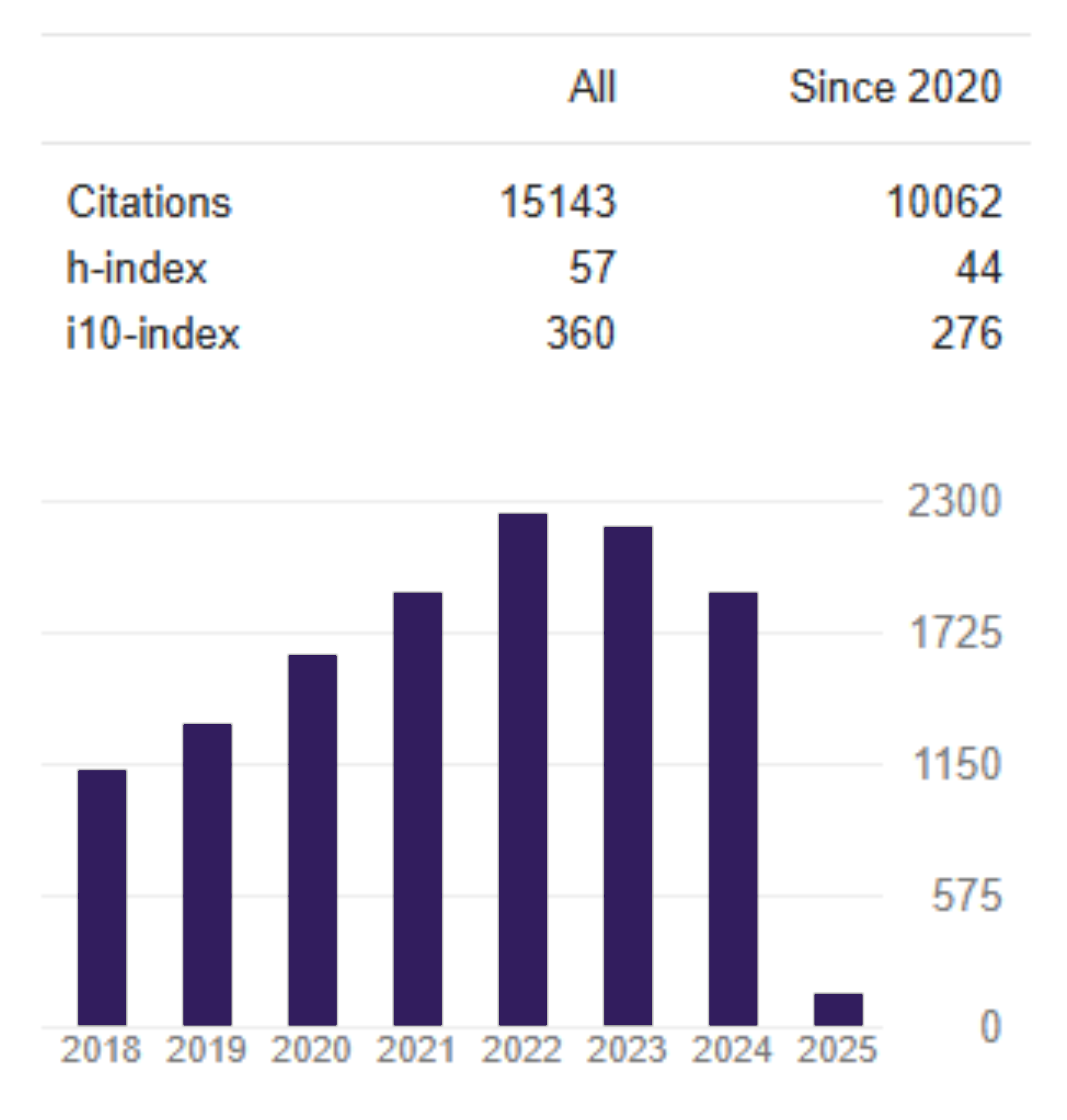The determinant factors of efficiency on Islamic banking and conventional banking in Indonesia
DOI:
https://doi.org/10.26905/jkdp.v23i3.3157Keywords:
Conventional banks, Efficiency, Two-Stage Data Envelopment Analysis, Islamic BanksAbstract
As intermediary institutions, conventional banks have larger amount of loans to third party funds than of Sharia banks. Thus, the bank needs a performance appraisal to measure banking operations through efficiency. We examine the efficiency of Islamic banks and conventional banks in Indonesia and analyzes the factors that influence the level of efficiency known as the Two-Stage Data Envelopment Analysis method. We found that there are significant efficiency differences between Islamic banking and conventional banking in the 1st quarter 2014- 4th quarter 2017. On the other hand, NPF and NPL results affected negatively towards Islamic and conventional banks efficiency. Asset and CAR affected positively significant toward Islamic banks efficiency. Asset and ROA had affected positively significantly toward conventional banks efficiency but CAR had affected positively insignificantly toward conventional banks. Lastly, ROA had affected positively insignificantly toward Islamic banks efficiency.
JEL Classification: G31, G32, G33
Downloads
References
Aladwan, M. S. (2015). The impact bank size on profitability “An empirical study on listed Jordanian commercial bankâ€. European Scientific Journal, 11(34), 1857-7881.
Alqahtani, F., Mayes, D. G., & Brown, K. (2017). Islamic bank efficiency compared to conventional banks during the global crisis in the GCC region. Journal of International Financial Markets, Institutions, and Money, 51, 58–74. https://doi.org/10.1016/j.intfin.2017.08.010
Berger, A. N., & DeYoung, R. (1997). Problem loans and cost efficiency in commercial banks. Journal of Banking & Finance, 21(6), 849-870. https://doi.org/10.2139/ssrn.2277
Bank Indonesia. (2014-2017). Statistik Perbankan Indonesia. Jakarta: Bank Indonesia.
Coelli, T. J., Rao, D. S. P., O’Donnell, C. J., & Battese, G. E. (2005). An Introduction to Efficiency and Productivity Analysis. Edisi Kedua. Boston, MA: Springer. https://doi.org/10.1007/b136381
Dang, U. 2011. The Camel Rating System In Banking Supervision A Case Study. Thesis. International Business. Archad University of Applied Science.
Defung, F. (2018). Determinants of bank efficiency during financial restructuring period: Indonesian case. Jurnal Keuangan dan Perbankan, 22(3), 518-531. https://doi.org/10.26905/jkdp.v22i3.2094
El Ayyubi, S., Anggraeni, L., & Mahiswari, A. D. (2017). Pengaruh bank syariah terhadap pertumbuhan ekonomi di Indonesia. Jurnal Al-Muzara’ah, 5(2). 88-106. https://doi.org/10.29244/jam.5.2.88-106
Fathony, M. 2012. Estimasi dan faktor-faktor yang mempengaruhi efisiensi bank domestik dan asing di Indonesia. Jurnal Keuangan dan Perbankan, 16(2), 223-237.
Firdaus, M. F., & Hosen, M. N. (2013). Efisiensi bank umum syariah menggunakan pendekatan Two-Stage Data Envelopment Analysis. Buletin Ekonomi Moneter dan Perbankan, 16(2). 168-188. https://doi.org/10.21098/bemp.v16i2.31
Garza-GarcÃa, J. G. (2012). Determinants of bank efficiency in Mexico: A two stage analysis. Applied Economic Letters, 19. 1679-1682. https://doi.org/10.1080/13504851.2012.665589
Haryanto, S. (2018). Determinan efisiensi bank: Analisis bank di Indonesia. Accounting and Financial Review, 1(1), 46-52. https://doi.org/10.26905/afr.v1i1.2230
Hauner, D. (2005). Explaining efficiency differences among large German and Austrian banks. Journal Applied Economics, 37(9), 969-980. https://doi.org/10.1080/00036840500081820
Itumo, N. P. 2013. Relationship between efficiency and financial performance of commercial bank in Kenya. Thesis. Master of Business Administration. University of Nairobi.
Kadioglu, E., Telceken, N., & Ocal, N. 2017. Effect of the asset quality on the bank profitability. International Journal of Economics and Finance, 9(7), 60-68. https://doi.org/10.5539/ijef.v9n7p60
Karimah, S., Novianti, T., & Effendi, J. (2016). Kajian efisiensi bank umum Syariah di Indonesia. Jurnal Al-Muzara’ah, 4(1), 33-43. https://doi.org/10.29244/jam.4.1.33-43
Miah, M. D., & Uddin, H. (2017). Efficiency and stability: A comparative study between Islamic and conventional bank in GCG Countries. Future Business Journal, 3(2), 172-185. https://doi.org/10.1016/j.fbj.2017.11.001
Mohd-Zamil, N. A. (2007). Efficiency of Islamic and conventional commercial banks in Malaysia (2000-2004): A data envelopment analysis (DEA) study. Master thesis. Selayang: International Islamic University Malaysia.
Pancurova, D., & Lyócsa, Š. (2013). Determinants of commercial banks’ efficiency: Evidence from 11 CEE countries. Journal of Economics and Finance, 63(2), 163-164.
Pradiknas, T. Y., & Faturohman, T. (2015). Efficiency of Islamic banking compared to conventional banking. Evidence from Indonesian banking sector. Journal of Business and Management, 4(5), 540-551.
Prasetyia, F., & Diendtara, K. (2011). Pengukuran efisiensi perbankan Syariah berbasis manajemen risiko. Jurnal Keuangan dan Perbankan, 15(1), 119-129.
Latumerissa, J. R. (2107). Bank dan Lembaga Keuangan Teori dan Kebijakan. Jakarta: Mitra Wacana Media.
Ramli, A., & Hakim, A. (2017). Pemodelan efisiensi bank di Indonesia: Perbandingan antara bank Syariah dan bank konvensional. Jurnal Bisnis dan Manajemen, 7(2), 131-148. https://doi.org/10.15408/ess.v7i2.4989
Rosman, R., Wahab, N. A., & Zainol, Z. (2014). Efficiency of Islamic banks during the financial crisis: An analysis of Middle Eastern and Asian countries. Pacific-Basin Finance Journal, 28, 76–90. https://doi.org/10.1016/j.pacfin.2013.11.001
Saeed, M., & Izzeldin, M. (2014). Examining the relationship between default risk and efficiency in Islamic and conventional banks. Journal of Economic Behavior & Organization, 132, 127-154. https://doi.org/10.1016/j.jebo.2014.02.014
Setiawan, C., & Kodratillah, O. I. (2017). Examining banks profitability and bank efficiency of Islamic commercial banks in Indonesia. Proceedings of 12th Asia-Pacific Business Research Conference. 27 -28 February. Malaysia: Kuala Lumpur.
Shahid, H., Rehman, R. U., Niazi, G. S. K., & Raoof, A. (2010). Efficiencies comparison of Islamic and conventional banks of Pakistan. International Research Journal of Finance and Economics, 49, 24-42.
Sufian, F., Noor, M. A., & Abdul-Majid, M. (2008). The efficiency of Islamic banks: Empirical evidence from the MENA and Asian countries Islamic banking sectors. Middle East Business and Economic Review, 20(1), 1–19.
Sugema, I., Toni, B., & Jaenal, E. (2007). Keunggulan sistem keuangan berbasil bagi hasil dan implikasinya pada distribusi pendapatan. Jurnal Keuangan dan Perbankan, 13(3), 506-517.
Sugema, I. (2003). Restrukturisasi Perbankan di Indonesia. Pengalaman Bank BNI. Jakarta: Tim INDEF.
Suliyanto, S., & Purnomo, D. J. (2014). Perbandingan efisiensi bank perkreditan rakyat dan bank umum dengan pendekatan DEA. Jurnal Keuangan dan Perbankan, 18(2), 297-304.
Tanjung, H., & Devi, A. (2018). Metodologi Penelitian Ekonomi Islam. Edisi 2. Jakarta: Gramata Publishing.
Wahab, A., Hosen, M. N., & Muhari, S. (2014). Komparasi efisiensi teknis bank umum konvensional (BUK) dan bank umum syariah (BUS) di Indonesia dengan metode Data Envelopment Analysis. Al-Iqtishad: Jurnal Ilmu Ekonomi Syariah, 6(2), 179-194. https://doi.org/10.15408/aiq.v6i2.1229
Downloads
Published
Issue
Section
License

This work is licensed under a Creative Commons Attribution-ShareAlike 4.0 International License.



